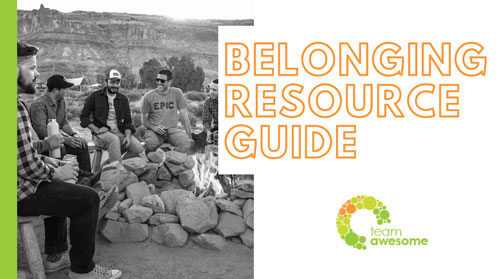You are a leader, either by choice or be default. I am referring here to leadership as your ability to lead and impact other people, not your title, rank, or how many people directly report to you. If you have an official leadership role in your organization, then these key areas to focus your leadership are especially critical. However, anyone who exhibits leadership as we have defined it can impact others around them to create a better team dynamic and work experience. Are you leading by choice with intention, or are you allowing your leadership to occur by default? Either way, your leadership is showing.
“Every day of our lives we are on the verge of making those slight changes that would make all the difference.” –Mignon McLaughlin
Making intentional leadership practices can be the small changes that make a big difference for your leadership effectiveness, and the experience of your teams. Here are four common culture pitfalls that can be drastically improved with awareness and intentional leadership on the part of the leader (that’s you!).
Issue #1: Miscommunication
Solution: Build communication routines and active listening skills
Lack of communication, incomplete information, lack of listening or communication styles that erode positive relationships are all forms of miscommunication that are within our control as leaders. Begin by building frequent communication touchpoints into your routine to ensure that it happens in a timely and complete manner, such as scheduling weekly one-on-one time with each key person on your team (and don’t cancel them!). With that routine intact, you can use that time every week to practice active listening and communicating in a way that allows the other person to feel heard, understood, and appreciated.
Issue #2: “Heads Down” Culture
Solution: Encourage interaction in and out of the office
I often see companies (often described as “performance based”) who over time have created a culture that is so busy and stretched that it becomes part of the fiber of the group to work long hours, eat lunch at your desk, and never allow time for “non-productive” activities. This is a mistake, and I would have eaten a lot less sad little desk drawer lunches had someone told me this sooner. People need connection in order to feel connected to the organization, so encouraging social lunch time or activities that bring people together in community spaces in your office are important. It is also in your best interest to get out and attend speakers, events, or networking and allow your teams to do the same. The connections created in and out of the office will be valuable to the individual and your organization.
Issue #3: Death by Meetings
Solution: Have fewer, well-planned meetings
Stop. Ask yourself, “Why are we having this meeting? Does it add value?” I love a well-planned meeting, but if you are finding that you or others are whispering that meeting was a waste of time, make a pact to ensure you only have meetings that move you forward. Plan agendas ahead of time, make sure everyone knows what their role is to bring to the meeting (i.e. updates, etc.) and make sure all of the right players are in the room. The purpose of the meeting should be to make decisions and move action forward that couldn’t be done over e-mail or in smaller groups, or to make brainstorming and collaboration efficient. If decision makers aren’t in the room or participants don’t know what is expected of them during the meetings, it will likely fall flat.
Issue #4: Turnover
Solution: The perfect mix of accountability and “The Big Three”
Leaders, taking personal accountability for the people on your team from start to finish is one of the critical parts of your role, not just a function of HR. People leave bosses, not HR representatives. If you take the stand of always asking what you could do differently to improve your leadership and the team experience, you will be in the right frame of mind to receive feedback to improve. Some of the key levers you can pull are to improve “The Big Three”: communication, recognition, and meaningful work. Listen to your team’s suggestions on what they need in these areas and they can be the most effective drivers of engagement.
Try a few tweaks out, assess your progress, and try again! It is easy to go through each day doing it the way “it has always been done” or saying “that’s just how we do it here,” but these are cycles you can break out of quickly with some intentional action on your part. If nothing else, you perhaps save yourself an hour from a meeting that you can use to eat a whole meal in the company of another human.
About the author:
Katie Rasoul is the Chief Awesome Officer for Team Awesome, a leadership coaching and culture consulting firm. Find out more by visiting www.teamawesomecoaching.com or sign up for our mailing list for awesomeness coming straight to your inbox. Follow Team Awesome on Facebook and Twitter.



Trackbacks/Pingbacks